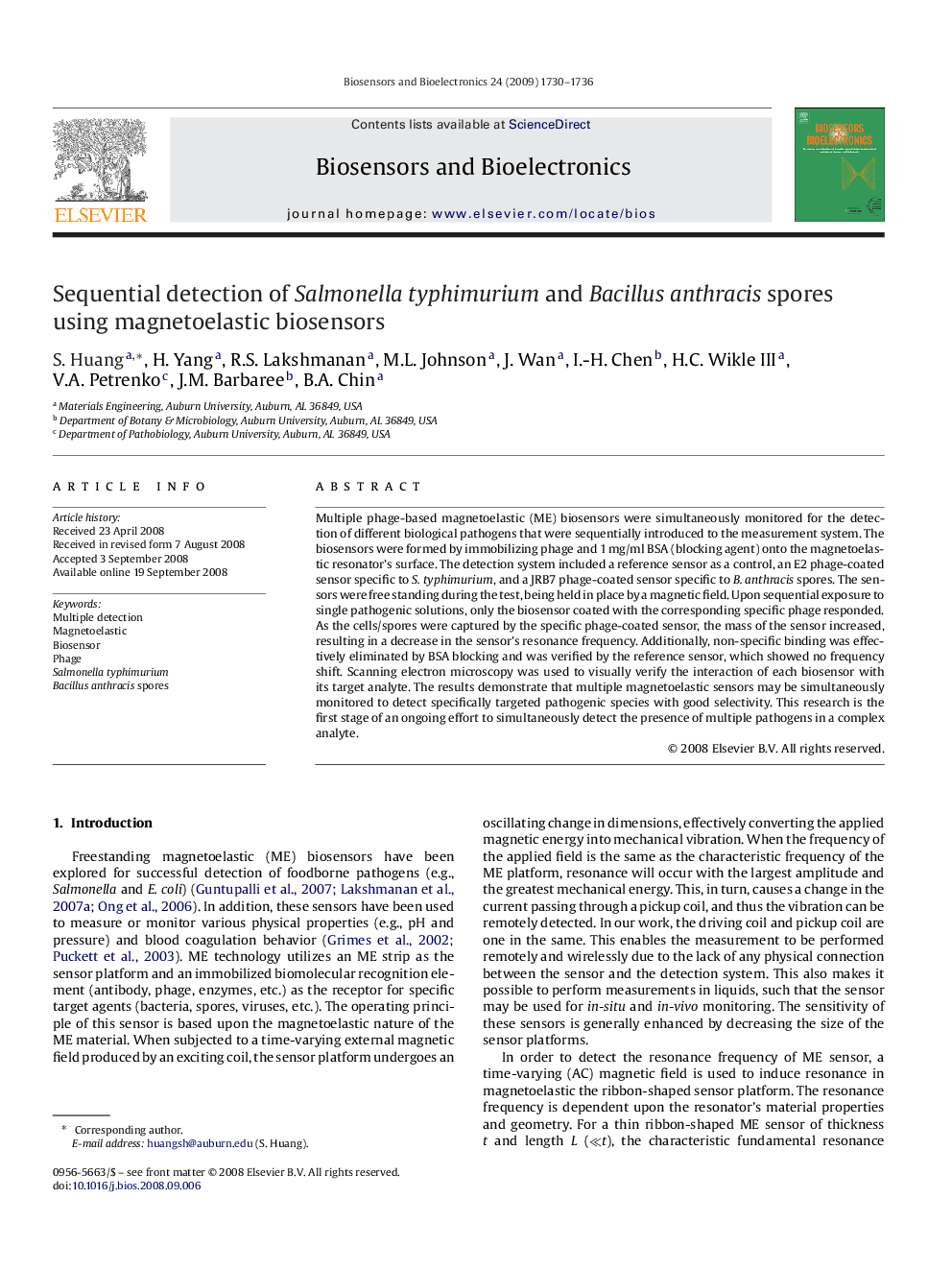| Article ID | Journal | Published Year | Pages | File Type |
|---|---|---|---|---|
| 869142 | Biosensors and Bioelectronics | 2009 | 7 Pages |
Multiple phage-based magnetoelastic (ME) biosensors were simultaneously monitored for the detection of different biological pathogens that were sequentially introduced to the measurement system. The biosensors were formed by immobilizing phage and 1 mg/ml BSA (blocking agent) onto the magnetoelastic resonator’s surface. The detection system included a reference sensor as a control, an E2 phage-coated sensor specific to S. typhimurium, and a JRB7 phage-coated sensor specific to B. anthracis spores. The sensors were free standing during the test, being held in place by a magnetic field. Upon sequential exposure to single pathogenic solutions, only the biosensor coated with the corresponding specific phage responded. As the cells/spores were captured by the specific phage-coated sensor, the mass of the sensor increased, resulting in a decrease in the sensor’s resonance frequency. Additionally, non-specific binding was effectively eliminated by BSA blocking and was verified by the reference sensor, which showed no frequency shift. Scanning electron microscopy was used to visually verify the interaction of each biosensor with its target analyte. The results demonstrate that multiple magnetoelastic sensors may be simultaneously monitored to detect specifically targeted pathogenic species with good selectivity. This research is the first stage of an ongoing effort to simultaneously detect the presence of multiple pathogens in a complex analyte.
